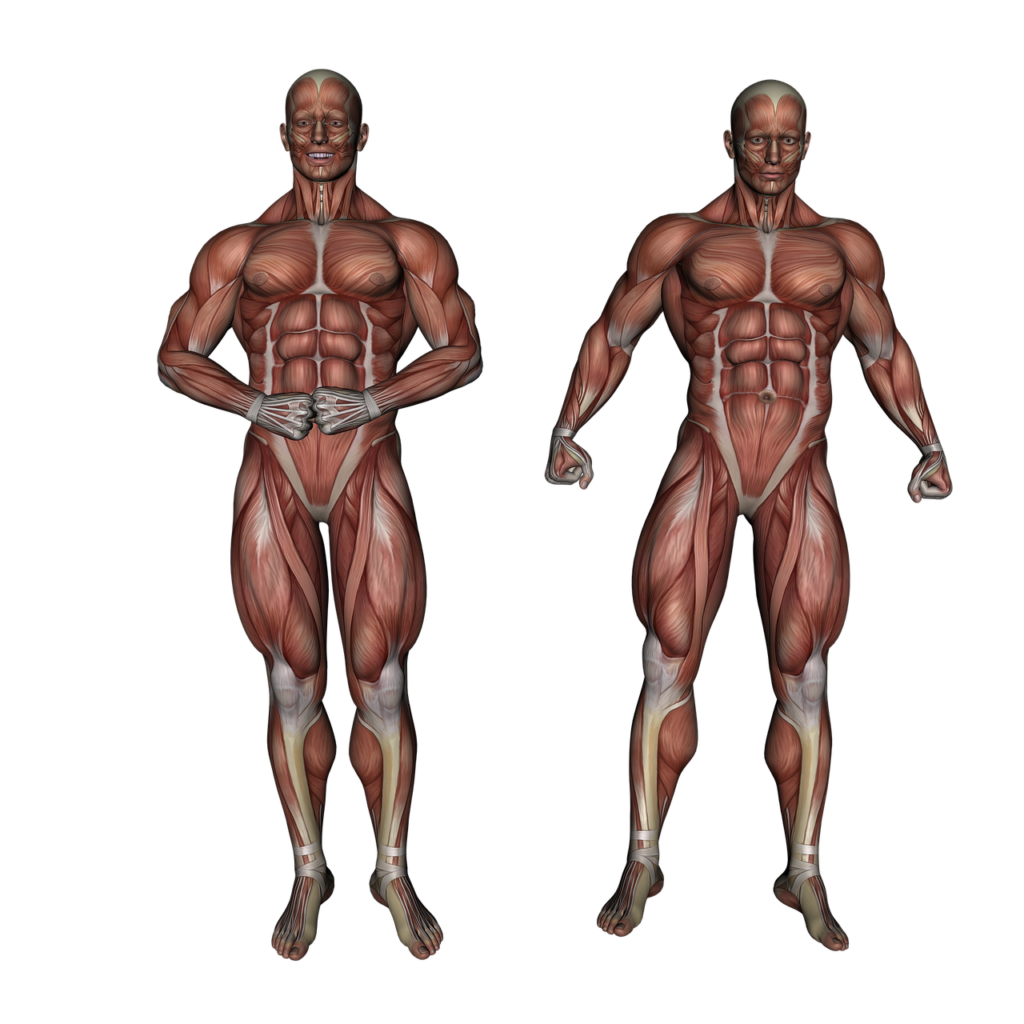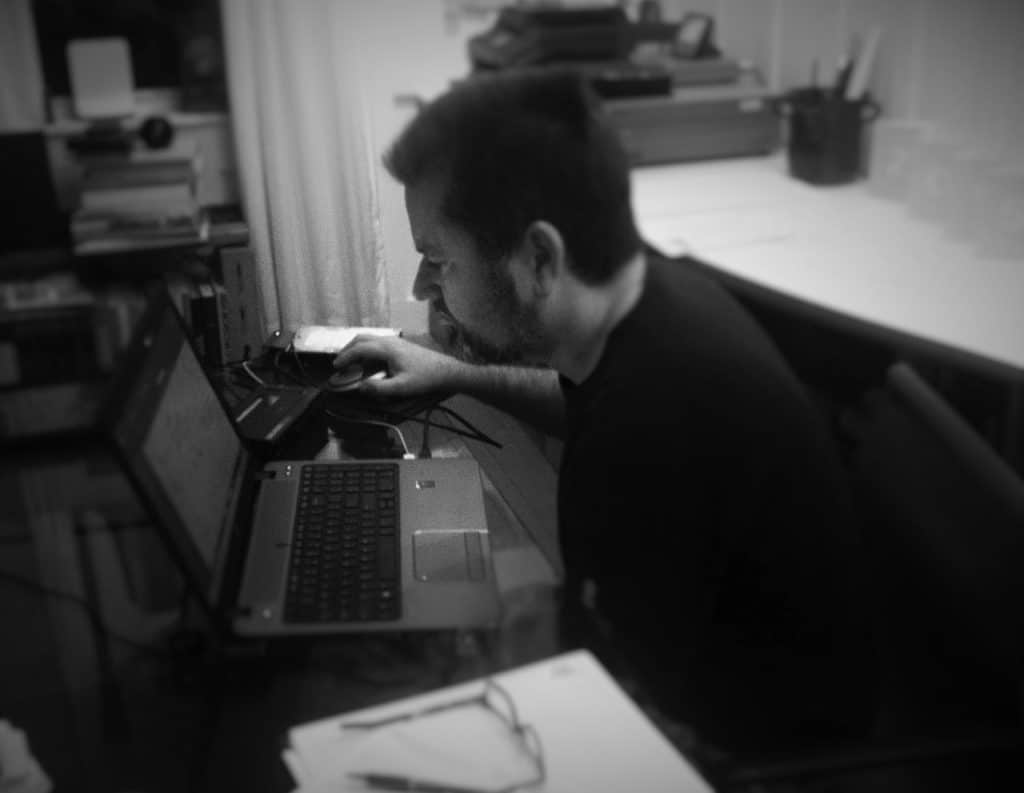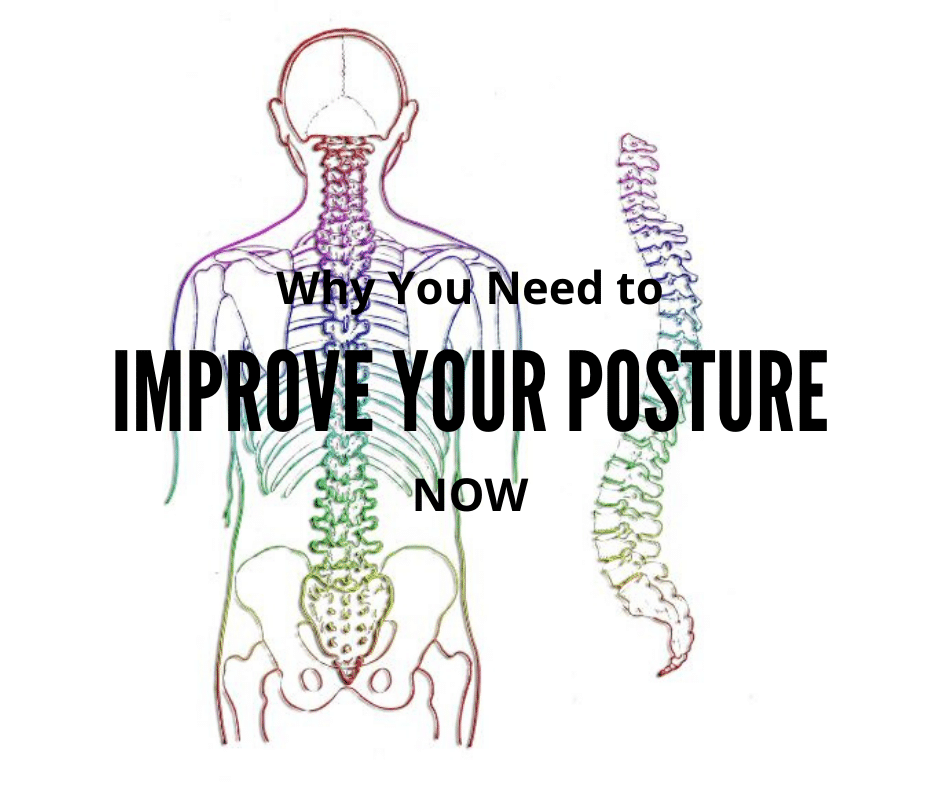Unless you’re continually mindful of your posture while you’re sitting, standing or sleeping, it’s likely to be out of whack.
Maintaining good posture as we age becomes an important and overlooked element of our health. To prevent posture related health issues, you need to improve your posture now.
Why posture is important
There are a multitude of reasons why good posture is important to your overall health, especially as you age.
Lessens strain on muscles and ligaments

Anyone who’s spent hours in an airplane or in a car can attest to that feeling of stiffness upon standing. Poor posture, even when sitting, puts continual stress and tension on muscles, causing them to tightening up. This can decrease your range of motion.
When your posture is in appropriate alignment, your muscles and ligaments are not stretched into abnormal positions.
Important for balance

I never realized how your abdominal muscles worked to hold you upright until I had surgery to repair one that I tore. Afterwards, I was instinctively hunched over until I could rebuild my strength.
Your core muscles play a key role in maintaining your balance. The major core muscles are those in your low back, your 6-pack abs, the deep abs that wrap around your sides and spine, and your obliques or side abs. Minor core muscles include your glutes and muscles of the upper back.
When these muscles are weak, as mine were post-surgery, your body hunches forward, throwing you off balance.
Supports good exercise form

Good posture helps establish a firm base from which to begin all your exercise moves. Having a strong base is critical to maintain proper form, which is key in preventing exercise related injuries.
Even the most toned and athletic person can suffer injury if repeated movements start with poor form as a result of poor posture.
Keeps bones and joints in proper alignment to lessen abnormal wear

Have you ever seen a car tire wear badly as a result of bad alignment? The same thing can happen to your joints when you have poor posture.
As a result of the muscle fatigue that is caused by holding your body in an abnormal position, the integrity of the joints are compromised. They move in a way they weren’t designed to, causing greater wear and tear. This increases the chance of arthritis.
Incorrect posture can accelerate the aging process and rob you of your mobility…and independence. This is why you need to improve your posture now, before any more lasting damage is done.
What Does Good Posture Look Like?
Now that you know why posture is important, it helps to know what good posture looks like so you can make improvements. Once you know what good posture is supposed to look like, you can make improvements now.
Standing

When you’re standing, good posture is where your spine maintains its natural curves in the neck, upper back, and lower back.
Your abdominal muscles are slightly pulled in, encouraging you to not lean forward or to either side. Feet are shoulder-width apart, with your hips and knees slightly relaxed. Your shoulders are down and not next to your ears, and rolled back slightly.
If you stand against a wall with your head, shoulders, and butt touching the wall, you should have about 1-2 inches of space in the curve of your neck and low back and the wall.
Sitting

When you’re sitting, good posture means that your back and rear end are against the back of the seat. This means the seat itself should accommodate the length of your thighs so that you can bend your knees to a 90 degree angle to place your feet flat on the floor.
In the seated position, you should have good lumbar support for your low back. You should be sitting up tall, with your shoulders rolled back and down away from your ears.
Sleeping

When you’re sleeping, good posture depends on your preferred sleeping position.
If you’re a side sleeper, look for a pillow that supports a neutral alignment of your neck with your back. Sleeping with a pillow between your legs will prevent your leg from pulling your spine out of alignment. If you’re a back sleeper, a pillow under your legs will support the curve in your low back.
How to Improve Your Posture Now
Regaining your posture is possible but it will take time and effort. In the end, the results deliver long lasting benefits. Practical approaches include both being mindful of how you’re performing daily activities and performing exercises that improve your posture.
At Your Desk

Working at home for the last several weeks, I sit an awful lot. More than I would in the office. I slump down in my chair, I slouch, and at times, I curl my feet up underneath me. The arms of my chair don’t slide under my desk, which means I’m hunched forward to reach my computer, or I’m sitting at the edge of my chair.
Don’t do any of these things.
Make sure your chair is appropriate for your desk both in height and in how you can reach your work area. All should support good seated posture, and allow your elbows and wrists to be parallel to your work surface. If you wear trifocals like me, you may need to adjust your monitor so you can keep your chin even and not drop your head back to read the screen.
Also please let me know where I can get a good chair.
While Driving

The same holds true for driving.
My drivers seat has way more adjustments than my desk chair and yours probably does too.
First, makes sure you’re close enough to the steering wheel so that your shoulders remain down and back. Your foot should rest comfortably on the gas peddle. If you can adjust the seat so your thighs are slightly higher than your hips, you should. Some cars provide lumbar adjustments. If yours doesn’t, provide your own.
High Heels

Yes, they make your legs look fabulous but they also pitch you into a position that puts your spine out of whack, causing low back pain. Over time, they place additional weight on your knees.
If you must go with heels, limit them to once a week.
Try Some Yoga
No, you don’t have to start a yoga practice to improve your posture, but several yoga poses will indeed provide benefits. And yes, you can do them with getting all Zen.
Child’s Pose

I have to admit, I roll into child’s pose every morning before I get out of bed. It relieves the pressure and discomfort in my low back, something that seems to plague me as I age.
Sit back on your heels and separate your knees a little wider than hip-width, bringing your big toes together. Walk your hands forward and allow your belly to drop between your thighs. Stretch your arms out further in front of you and drop your forehead to the floor. Inhale and exhale into the stretch for 3 – 5 breaths
Forward Fold

Forward fold can be done either standing or seated.
If you’re standing, your feet should be about hip-width apart. Inhale and pull your abdominal muscles in towards your spine. Exhale and bend forward at the waist, leading with your chest. Place your fingertips on the floor. If there is tension in your hamstrings, put a slight bend in your knees. Keep your head in alignment with your spine by gazing at your thighs. Inhale and roll your spine up as you stand.

In a seated forward fold, sit with your legs stretch out in front of you, feet flexed. Inhale and raise your arms up alongside your ears. Exhale and bend forward at the waist, leading with your chest and not rounding your back like this guy. When you’ve reached your maximum length, drop your hands to the floor or grasp your calves. Inhale and exhale into the stretch for 3 – 5 breaths.
Chest Opener

This is very beneficial if you sit all day hunched over a desk.
Stand with your feet hip-width apart. Bring your arms together behind you and interlace your fingers. If your hands don’t reach each other, use a towel. Your shoulders should be rolled back and down, and your head and neck should be aligned. Inhale and lift your arms behind you as much as you can. Don’t strain in this movement; it’s likely this movement will be very slight. Exhale and release. Inhale and exhale through the movement 3 – 5 times.
Downward Dog

Downward dog is another version of a forward bend. Done correctly, it will help alleviate back pain while strengthening and aligning your back muscles.
Starting on your hands and knees, make sure your knees are under your hips, and your hands are under your shoulders. Tuck your toes and push your hips up to form an inverted “V”. Make sure you are pushing away from the floor with your hands, keeping your shoulder away from your ears. Gently press your chest towards the floor. Your heels should be pressing towards the floor. Keep your head in alignment with your spine by gazing at your thighs. If your hamstrings are tight, put a slight bend in your knees. Inhale and exhale into the stretch for 3 – 5 breaths.
Conclusion
Improving your posture now is easier than you think and quiet achievable. The benefits of actively working to achieve and maintain good posture are long lasting and can reduce the injury, pain, stiffness and soreness that accompanies the aging process.
Fight that process by working regularly to keep your posture in tact!

